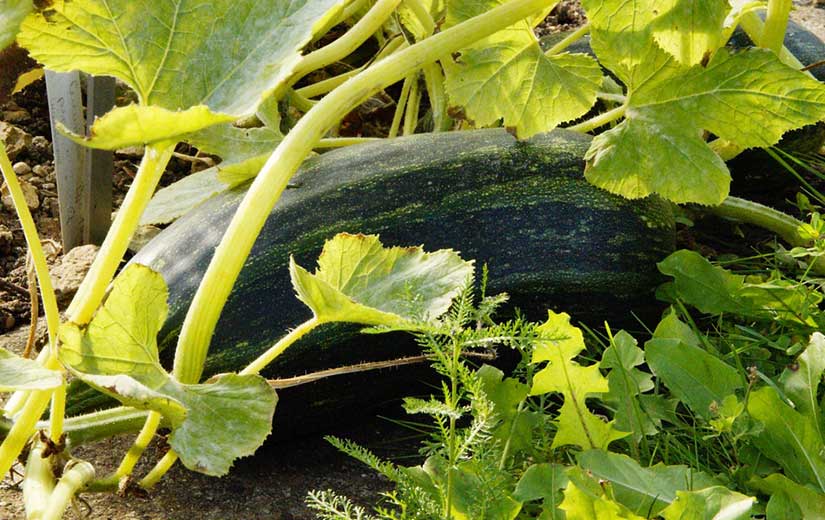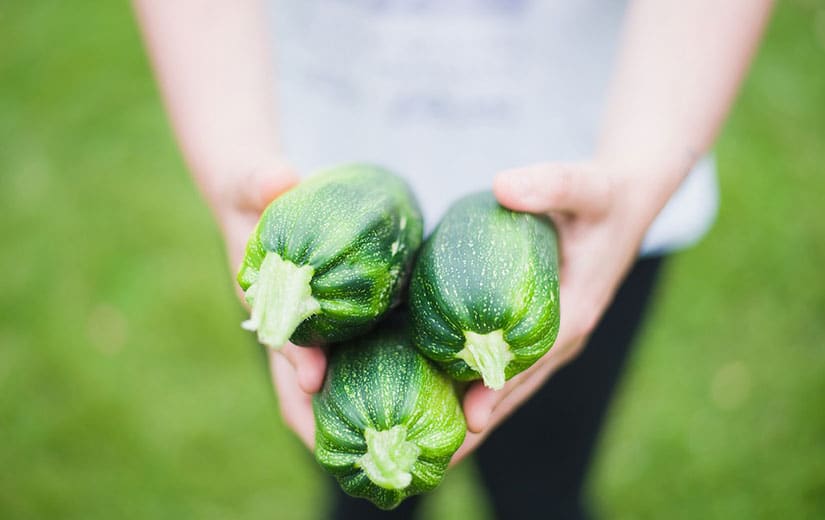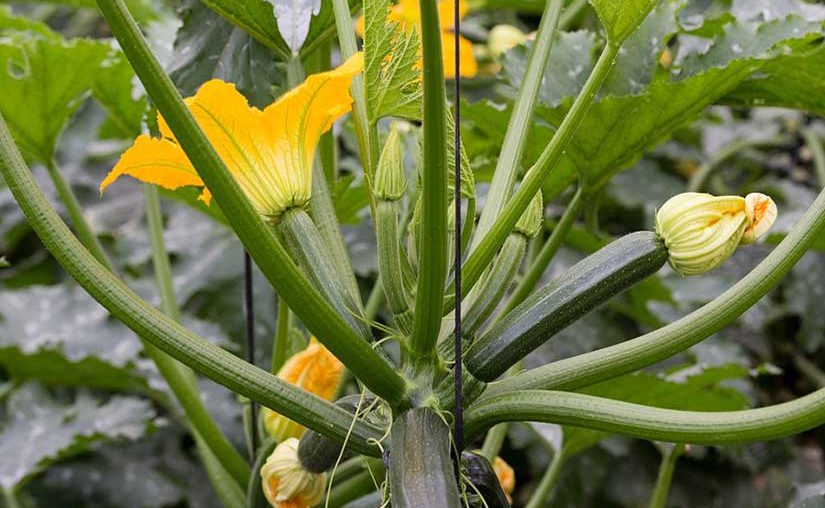Zucchini is part of the cucurbits category. Easy to grow, this vegetable is ideal for herb gardeners. Its harvests are abundant and will allow you to prepare small dishes throughout the summer, and even after, if you keep it. Doing your own zucchini seedlings will cost you less than buying seedlings in pots. But how to do it ? What is the good period? Follow our tips to learn how to sow zucchini in your garden.
Which varieties to favor?
Sowing zucchini oneself also makes it possible to choose the variety, and this one is numerous. Most zucchini plants are bushy, but there are some varieties that are runners. The color of their skin and their shape vary. To help you choose, here is the list of the most famous varieties:
- Non-runner green courgettes : it is the zucchini that we find most often in our baskets. It is green streaked with white, elongated shape and a length of about 18 cm. She has a delicious firm flesh.
- Green of Milan or Black Beauty It is long and dark, bushy and very productive. This variety grows quickly and must be harvested at 15 cm.
- The White of Egypt : it is bushy type and grows in abundance. Fruit with firm flesh, clear skin and bulging form. You will be able to collect fruits at 15 cm. They resist well to freezing, ideal to make reserves for the winter.
- Round of Nice : it grows bushy and abundantly. This round zucchini, pale in color, also has a delicious and melting flesh. You can eat it young or at maturity. She is vigorous and resists diseases.
- Gold Rush : early variety of bush type. Yellow color, this variety of zucchini has a tender and sweet flesh.
- Ortolana Di Faenza : bushy and early variety, shorter and fair-skinned.
- Papaya Pears : this zucchini of the semi-racy type with yellow skin looks more like a pear. Its flesh is melting and tasty.
- Hybrid F1 diamond : productive and early plant that grows in bush. A gourmet zucchini thin and elongated, green color and shiny skin.
To know : You can use seeds of your own squash, but watch out for hybridization. Some varieties easily hybridize which can give "degenerate" squash. To do this, you must collect the seeds of an already very ripe fruit. Instead, take your fruit on a sturdy foot and wash the seeds before drying them in a dry, warm place in the shade.
When to plant?

The timing of sowing zucchini is very important for the success of your harvest. To germinate, the seeds need heat, at least 15 ° C. If you sow your seeds early in the season, it is best to do it indoors, under heated cover, mini greenhouse or frame. If you sow them in April, you will need to use a frame, placed in a lit place and where it is sufficiently hot. If you can not do it under cover, you will have to wait a few weeks until the frosts end to sow your zucchini directly on the spot. In regions with a Mediterranean climate, towards the Côte d'Azur, it is possible to plant its zucchini seedlings in April in open ground.
Sowing periods:
- April : You can plant your first zucchini seedlings outdoors under heated cover, or inside the window if it's over 15 ° C. You'll transplant them to the ground later, once the last frosts will be passed. Wait until mid-May to be sure.
- May : You can sow your plants directly on the spot and without shelter, after the frosts or start again those under shelter which did not germinate in April.
- June : Sowing again in the ground in June allows you to stagger harvests and compensate for losses from the first round, if the plants have been infected with diseases or their production is declining.
How to sow zucchini?

Equipment
To sow zucchini outdoors, you will not need specific equipment. To make seedlings under shelter, you will need:
- buckets;
- a heated miniserre or chassis;
- Earth ;
- sand;
- potting soil.
For the interior
Indoor planting is done in late March or early April, under the conditions we mentioned earlier. Here are the steps:
- Mix 1/3 of garden soil, 1/3 of soil and 1/3 of sand and put the mixture in small scoops.
- Plant 3 seeds in each bucket and add a thin layer of potting soil over it.
- Place in a warm, warm place, above 15 ° C, ideally in a heated greenhouse, otherwise near a window or heat source.
- Water regularly and without drowning the plants. The first leaves should emerge after one week.
- In each bucket, select the most beautiful plant and replant it in another bucket.
- Let the seeds germinate and transplant them to the garden in mid-May. You can start harvesting them in July.
For the outside
First, assess whether your area has a climate that is conducive to growing them before you consider planting zucchini directly in your garden. To grow beautiful zucchini in the ground, it is important to choose an area well exposed to the sun and warm, as well as a rich and well drained land, that is to say, not too compact. It is imperative that the land retains some freshness even during the summer season. Here are the steps to follow in order to plant zucchini seeds in your vegetable garden:
- Dig holes 30 cm every 1 m and fill them with compost.
- Sow two or three seeds per bag. They must be buried 2 cm below the ground.
- Water regularly to keep the soil cool until the first leaves appear.
- Make the thinning by keeping only the best plant, the most vigorous.
- Install traps for slugs or put your plant under a bell.
- Pick the first vegetables from August.
To know As they have not been transplanted, the seedlings that have been sown in seedlings are generally more vigorous.
Our tips for a successful shoot
Space well the seedlings for the seedlings in place, 1 m for bushy zucchini and 2 m for courgettes coureux. To preserve your plants in a mini vegetable garden, grow your foot in the center of a square of 1 m².
Despite common belief, different species of cucurbits do not hybridize with each other. So you can plant cucumbers and melons nearby. Nevertheless, the different varieties of zucchini tend to cross each other. We must therefore ensure that the plans are well spaced.
Soils are resistant to the planting of zucchini, but to avoid depletion, it is recommended to rotate crops. Wait 2 to 3 years to sow zucchini at the same location.
Water regularly and with delicacy so that your plants fructify in abundance. For this, you can use a microporous hose that sprinkles your plants automatically in a more harmonious way. This will improve the productivity of your zucchini plants.
How to maintain zucchini plants?
Zucchini are vegetables that are easy to grow and quite hardy, but there are a few extra things that can be used to maintain your vegetables and vegetables.
First the soil hoeing. This practice consists in aeration of the superficial part of the ground and favors the penetration of the water. This makes it possible to keep the soil softer and therefore easier to work with. For this, you can use hand tools like a hoe or a hoe, or mechanical such as a tiller or a plow.
The mulching operation of zucchini planted directly in the ground, serves to preserve the freshness of the soil, prevent weeds from appearing and isolate the fruits of the earth to protect them from the risk of rot if the soil is too wet. Simply spread a plant mulch around the feet of your plants as they begin to grow. Place a layer of mulch about 5 cm thick in a perimeter of 80 cm in diameter around the plant.
Keep the soil moist during the whole crop. After sowing zucchini, water them sparingly rather than abundantly and spaced. Too much water will grow more leaves than fruits. Once the first flowers and fruits are out, you can water more regularly. Be careful not to wet the leaves to prevent them from being affected by powdery mildew, a common disease on zucchini plants.
The runners must be pinched so that the plant will fruit more regularly. When the plant already has 4 to 6 leaves, it must be cut above the first two leaves. This will grow two new stems on which the first fruits will grow. Let some vegetables grow, then cut the new stems after the second leaf that is after the last fruit you have kept. Let the new fruits grow and water regularly.
When to harvest the zucchini?

After a few weeks to maintain your plants, you will finally see the first fruits appear. They will have to be allowed to grow until they measure between 15 and 25 cm in length. Count about two to three months after sowing. If the zucchini seedlings have been staggered, the same must be done for the harvest. Plants should not be allowed to grow larger as the skin hardens and the quality of the flesh decreases. To ensure a good harvest, you must monitor your plants daily and pay attention to the weather. A slightly violent thunderstorm can cause a lot of damage!
Even more plantations:









